Abstract
The in vitro activity of PD 127,391, a dihalogenated quinolone, was compared with those of ofloxacin, ciprofloxacin, nalidixic acid, gentamicin, and cefuroxime against 525 recent isolates and well-characterized antimicrobial agent-resistant strains. The MICs of PD 127,391 against 90% of members of the family Enterobacteriaceae, Bacteroides fragilis, Haemophilus influenzae, Neisseria sp., and Streptococcus pneumoniae were less than or equal to 0.12 microgram/ml. Some 90% of Pseudomonas aeruginosa and staphylococci were susceptible to 0.25 micrograms of PD 127,391 per ml. Against most strains, PD 127,391 was 2- to 8-fold more active than ciprofloxacin, but it was 64-fold more active than ciprofloxacin against B. fragilis. Strains of members of the family Enterobacteriaceae which were resistant to nalidixic acid were less susceptible to all of the quinolones tested, including PD 127,391. The MIC and minimum lethal concentration of PD 127,391 against three strains of Chlamydia trachomatis were each 0.06 microgram/ml, and the MIC against 90% of 21 strains of Mycobacterium tuberculosis was 1 microgram/ml. PD 127,391 was less active at pH 5, its maximal activity being at pH 7 to 8. The presence of urine at pH 5.9 decreased the bactericidal activity. The protein binding of PD 127,391 was 2 to 7%, and serum had little effect on activity.
Full text
PDF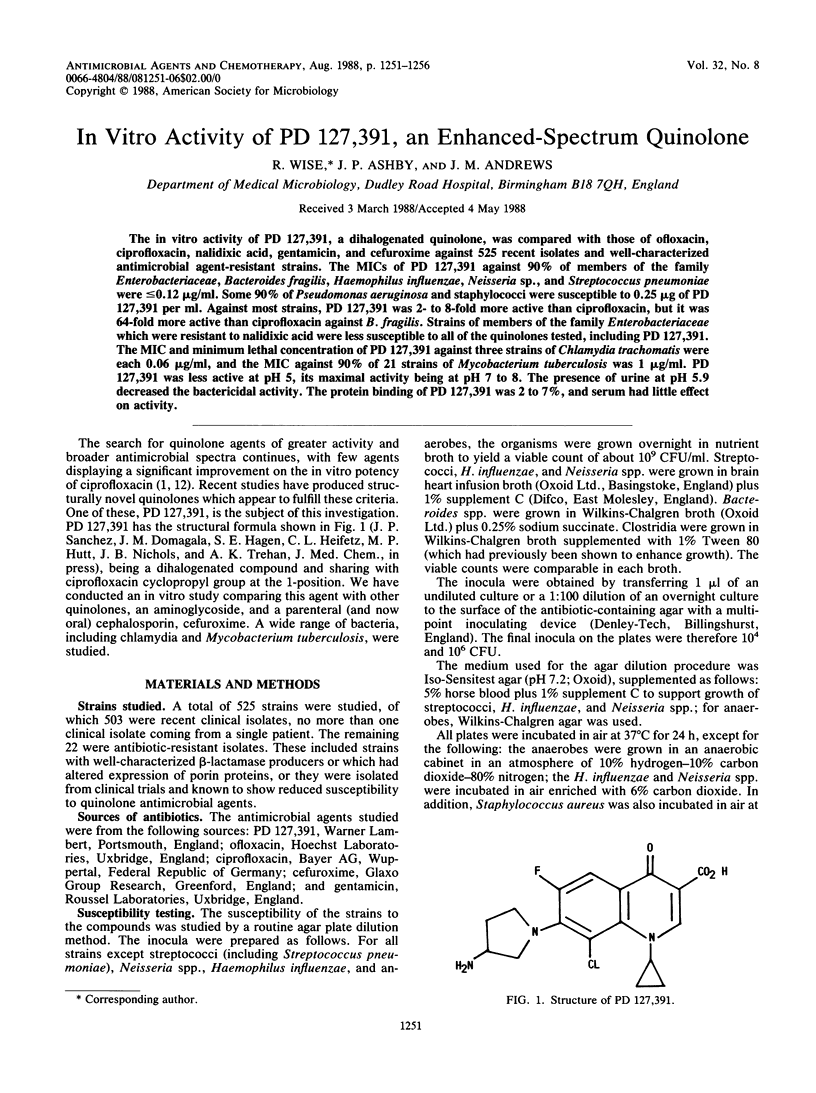
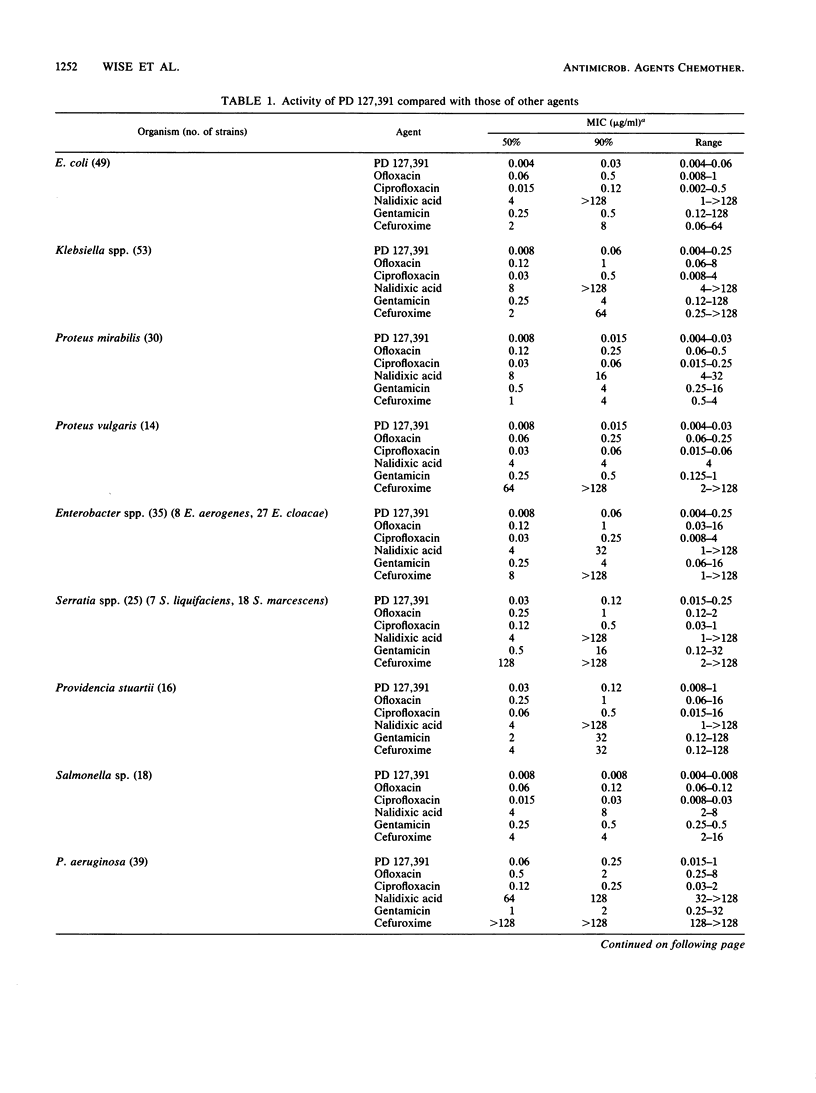
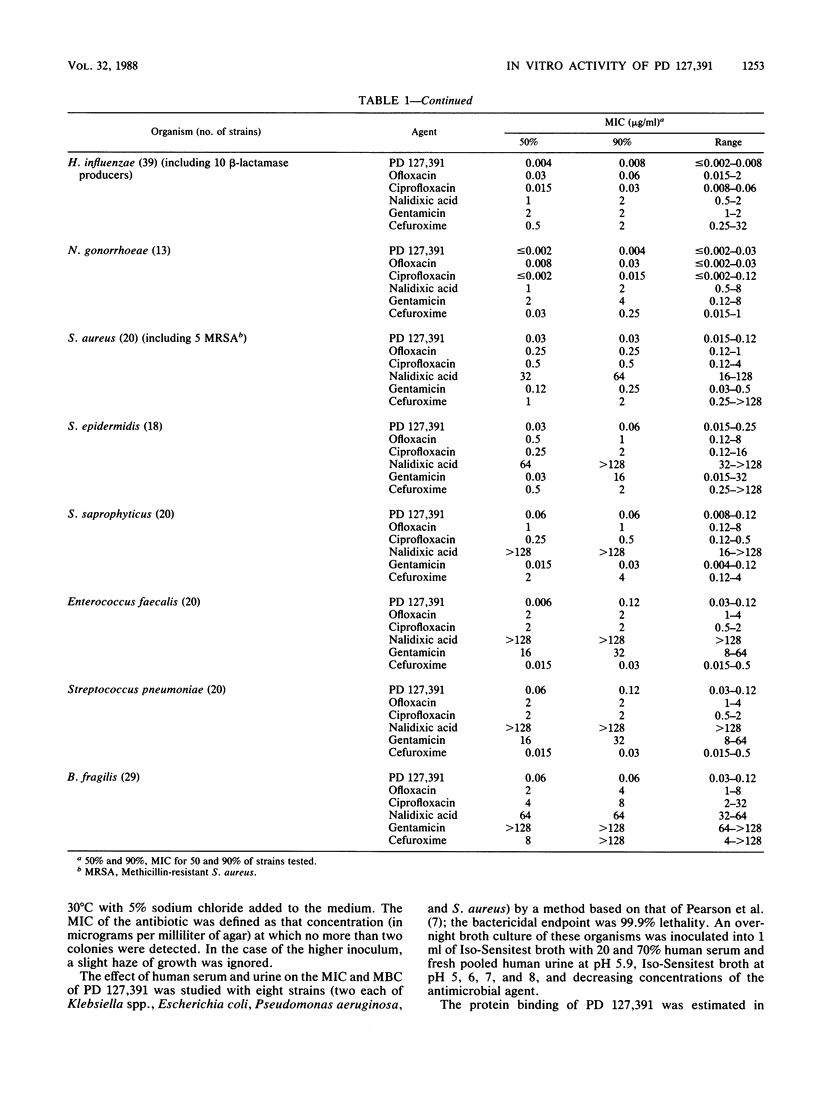
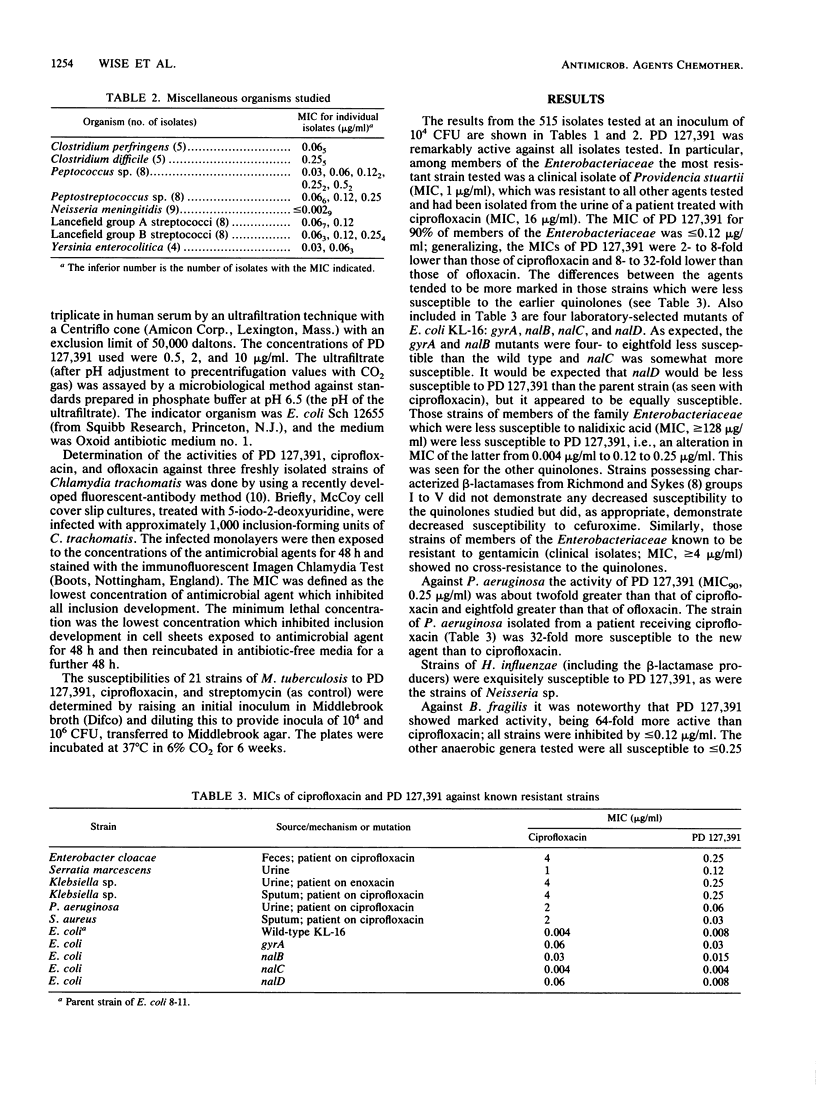
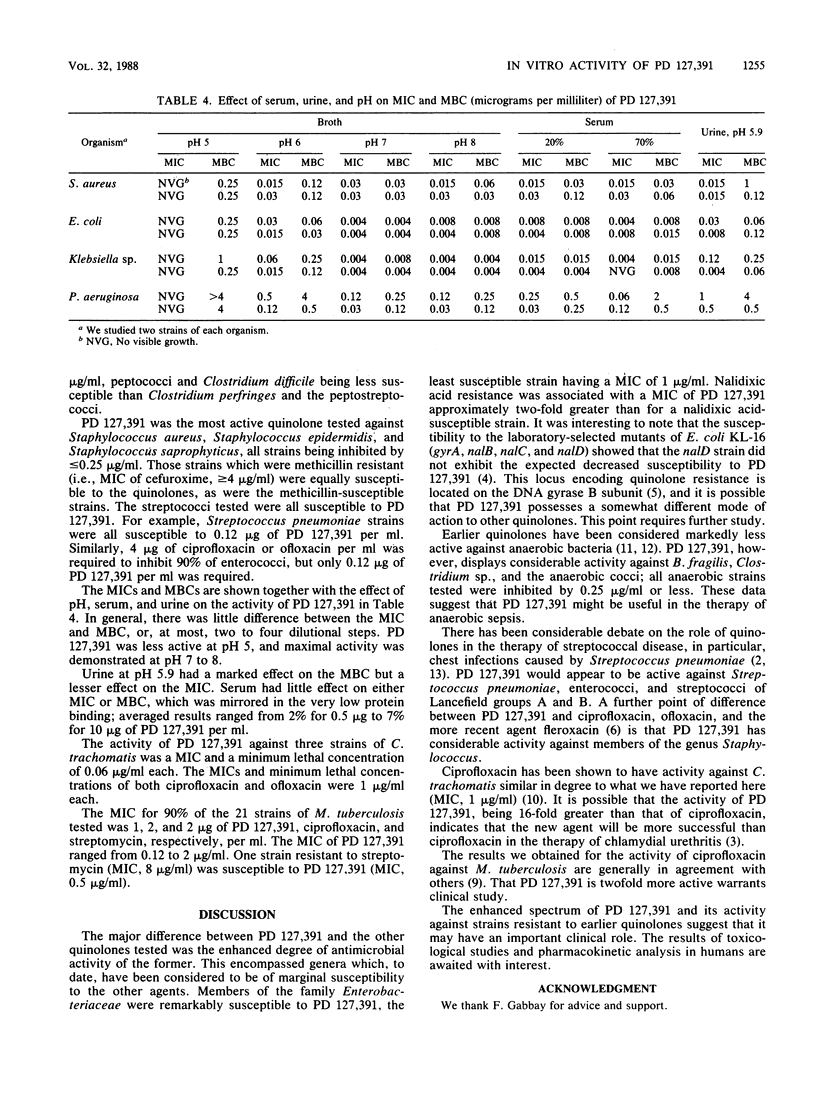
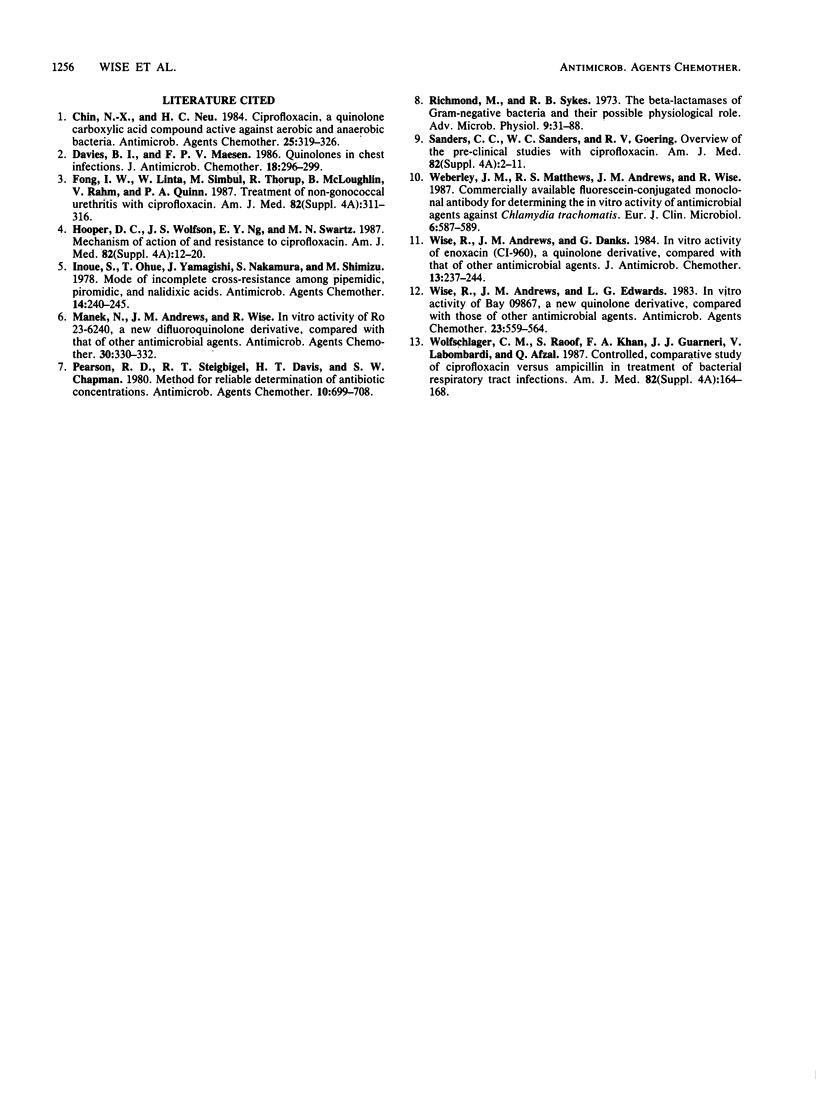
Selected References
These references are in PubMed. This may not be the complete list of references from this article.
- Chin N. X., Neu H. C. Ciprofloxacin, a quinolone carboxylic acid compound active against aerobic and anaerobic bacteria. Antimicrob Agents Chemother. 1984 Mar;25(3):319–326. doi: 10.1128/aac.25.3.319. [DOI] [PMC free article] [PubMed] [Google Scholar]
- Davies B. I., Maesen F. P. Quinolones in chest infections. J Antimicrob Chemother. 1986 Sep;18(3):296–299. doi: 10.1093/jac/18.3.296. [DOI] [PubMed] [Google Scholar]
- Fong I. W., Linton W., Simbul M., Thorup R., McLaughlin B., Rahm V., Quinn P. A. Treatment of nongonococcal urethritis with ciprofloxacin. Am J Med. 1987 Apr 27;82(4A):311–316. [PubMed] [Google Scholar]
- Hooper D. C., Wolfson J. S., Ng E. Y., Swartz M. N. Mechanisms of action of and resistance to ciprofloxacin. Am J Med. 1987 Apr 27;82(4A):12–20. [PubMed] [Google Scholar]
- Inoue S., Ohue T., Yamagishi J., Nakamura S., Shimizu M. Mode of incomplete cross-resistance among pipemidic, piromidic, and nalidixic acids. Antimicrob Agents Chemother. 1978 Aug;14(2):240–245. doi: 10.1128/aac.14.2.240. [DOI] [PMC free article] [PubMed] [Google Scholar]
- Pearson R. D., Steigbigel R. T., Davis H. T., Chapman S. W. Method of reliable determination of minimal lethal antibiotic concentrations. Antimicrob Agents Chemother. 1980 Nov;18(5):699–708. doi: 10.1128/aac.18.5.699. [DOI] [PMC free article] [PubMed] [Google Scholar]
- Richmond M. H., Sykes R. B. The beta-lactamases of gram-negative bacteria and their possible physiological role. Adv Microb Physiol. 1973;9:31–88. doi: 10.1016/s0065-2911(08)60376-8. [DOI] [PubMed] [Google Scholar]
- Webberley J. M., Matthews R. S., Andrews J. M., Wise R. Commercially available fluorescein-conjugated monoclonal antibody for determining the in vitro activity of antimicrobial agents against Chlamydia trachomatis. Eur J Clin Microbiol. 1987 Oct;6(5):587–589. doi: 10.1007/BF02014256. [DOI] [PubMed] [Google Scholar]
- Wise R., Andrews J. M., Danks G. In-vitro activity of enoxacin (CL-919), a new quinoline derivative, compared with that of other antimicrobial agents. J Antimicrob Chemother. 1984 Mar;13(3):237–244. doi: 10.1093/jac/13.3.237. [DOI] [PubMed] [Google Scholar]
- Wise R., Andrews J. M., Edwards L. J. In vitro activity of Bay 09867, a new quinoline derivative, compared with those of other antimicrobial agents. Antimicrob Agents Chemother. 1983 Apr;23(4):559–564. doi: 10.1128/aac.23.4.559. [DOI] [PMC free article] [PubMed] [Google Scholar]
- Wollschlager C. M., Raoof S., Khan F. A., Guarneri J. J., LaBombardi V., Afzal Q. Controlled, comparative study of ciprofloxacin versus ampicillin in treatment of bacterial respiratory tract infections. Am J Med. 1987 Apr 27;82(4A):164–168. [PubMed] [Google Scholar]


